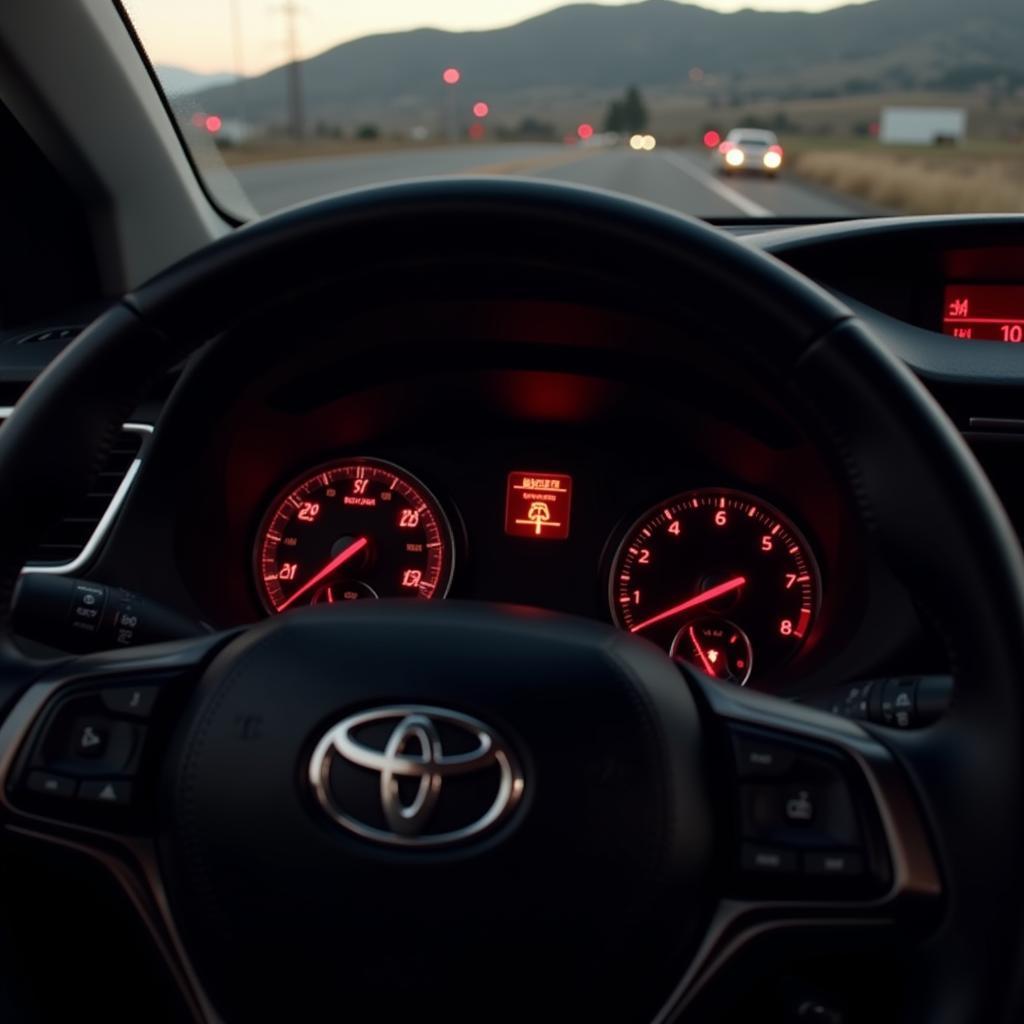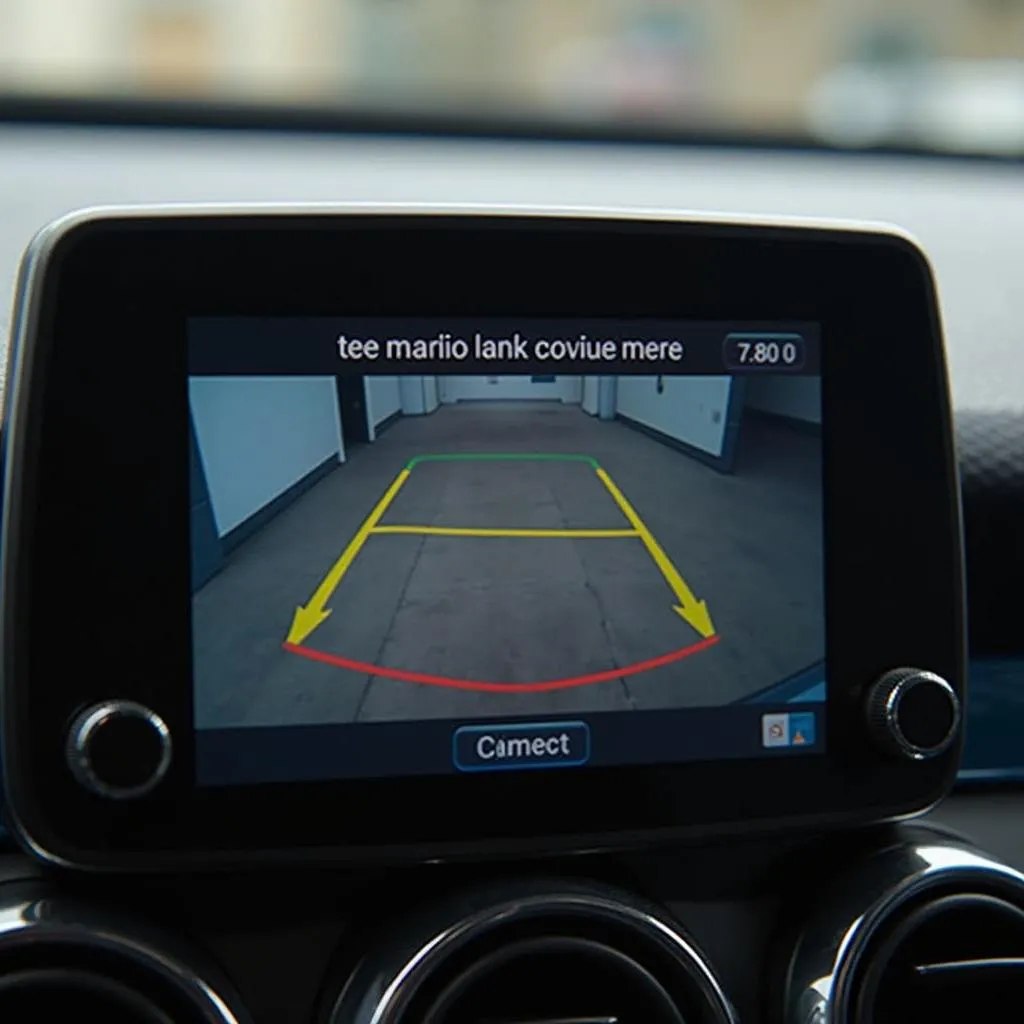The Toyota brake warning light is a crucial safety indicator. If it illuminates on your dashboard, it’s essential to understand why and address the issue promptly. This article provides a comprehensive guide to troubleshooting and resolving problems related to the Toyota brake warning light. We’ll explore common causes, diagnostic techniques, and potential solutions, empowering you to take the necessary steps to ensure your vehicle’s safety. toyota brake warning light stays
Understanding the Toyota Brake Warning Light System
The brake warning light system is designed to alert you to potential problems with your Toyota’s braking system. It’s not just about worn brake pads; several factors can trigger this warning. Ignoring it can lead to severe safety risks, including reduced braking performance and potential brake failure.
Common Causes of a Toyota Brake Warning Light
Several issues can activate the brake warning light. Some of the most frequent culprits include:
- Low Brake Fluid: This is the most common cause. A leak in the brake lines, worn brake pads, or a failing master cylinder can lead to low brake fluid.
- Worn Brake Pads: Brake pads have wear indicators that trigger the warning light when they reach a certain thickness.
- Faulty Brake Light Switch: The brake light switch, located near the brake pedal, can malfunction, causing the brake warning light to stay on.
- ABS Issues: Problems with the Anti-lock Braking System (ABS), such as a faulty sensor or control module, can trigger the warning light.
- Parking Brake Engaged: Sometimes, the simple oversight of leaving the parking brake engaged can cause the warning light to illuminate.
 Toyota Brake Warning Light on Dashboard
Toyota Brake Warning Light on Dashboard
Diagnosing the Problem: A Step-by-Step Guide
If your Toyota brake warning light stays on, follow these steps to diagnose the problem:
- Check the Parking Brake: Make sure the parking brake is fully disengaged.
- Inspect the Brake Fluid Level: Locate the brake fluid reservoir under the hood and check the fluid level. If it’s low, add brake fluid to the recommended level.
- Check for Leaks: Inspect the brake lines and calipers for any signs of leaks.
- Inspect Brake Pads: Check the thickness of your brake pads. If they are worn down to the wear indicators, they need to be replaced.
What if the Light Stays On?
If the light remains illuminated after these checks, it’s time to consult a professional. A qualified mechanic can use advanced diagnostic tools to pinpoint the exact cause of the problem. 2004 toyota brake warning light won’t go off
“A seemingly simple brake warning light can be a symptom of a complex underlying issue,” says automotive expert, David Miller, ASE Certified Master Technician. “Don’t hesitate to seek professional help if the problem persists.”
Advanced Diagnostics and Remote Software Solutions
Modern vehicles, including Toyotas, are increasingly reliant on sophisticated electronic systems. This means diagnostic and repair procedures often involve software updates and programming. Remote diagnostics and software solutions are now becoming commonplace, allowing technicians to identify and resolve issues efficiently. brake warning light on toyota tacoma
 Remote Diagnostics for Toyota
Remote Diagnostics for Toyota
Toyota Sienna and Tundra: Specific Considerations
While the general principles of brake system diagnostics apply to all Toyotas, certain models may have specific considerations. For example, the Toyota Sienna and Tundra, being larger vehicles, may experience different wear and tear patterns on their braking systems. toyota sienna brake system warning light brake warning light on toyota tundra
“Larger vehicles like the Sienna and Tundra often require more frequent brake maintenance due to their increased weight and load capacity,” explains automotive engineer Sarah Chen. “Regular inspections are crucial for ensuring optimal braking performance.”
Conclusion
The toyota brake warning light is a critical safety feature. Understanding its significance and addressing the underlying issue promptly is vital for your safety and the longevity of your vehicle. Don’t ignore this warning—take action to ensure your brakes are in optimal condition.
FAQ
- Can I drive with the brake warning light on? It’s strongly advised not to drive with the brake warning light illuminated. It indicates a potential problem that could compromise your braking ability.
- How much does it cost to fix a toyota brake warning light issue? The cost varies depending on the underlying cause. It could range from a simple top-up of brake fluid to more extensive repairs like replacing brake pads or rotors.
- How often should I check my brake fluid level? It’s a good practice to check your brake fluid level at least once a month.
- What color is the toyota brake warning light? It’s typically red or amber, indicating a potential problem requiring attention.
- Can I fix the brake warning light issue myself? Some simple fixes, like adding brake fluid, can be done DIY. However, for more complex issues, it’s best to consult a qualified mechanic.
- What is the difference between the brake warning light and the ABS light? The brake warning light indicates a general problem with the braking system, while the ABS light specifically signals an issue with the Anti-lock Braking System.
- How can I prevent future brake warning light issues? Regular maintenance, including brake inspections and fluid checks, is the best way to prevent future brake problems.

